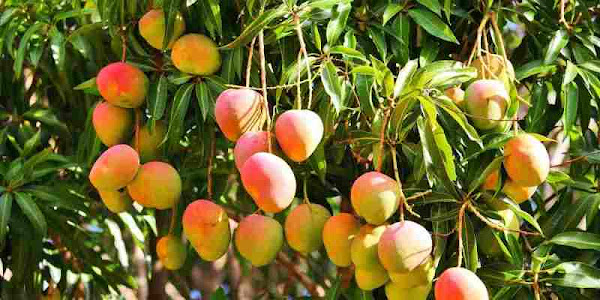On the world scale, the Australian mango industry is relatively insignificant. However, production has increased over the past
decade and it is forecast that domestic production will double within ten years, making it one of the major domestic horticultural crops. Mangoes grow best in climates which have low rainfall and low relative humidity at flowering, fruit setting and harvesting and that are warm to hot during fruiting. However, mangoes will tolerate a wide range of climates from warm temperate to tropical. With these climate requirements, mangoes are grown predominately in northern Australia. Queensland is the major producing state, accounting for 70% of domestic production, by volume. The Northern Territory is also a major mango producer accounting for 20%
of production. The remaining production areas are in Western Australia and northern New South Wales.
The growing season in Australia stretches from mid spring to autumn with flowering from June to August and peak production occurring during December and January. The first fruit to reach the markets in late September and October is from the northern growing areas such as Darwin, Kununurra and Katherine, whilst the last fruit on the market is sourced from around Carnarvon in Western Australia.
The level of care and attention given to each mango in this process is truly impressive! It's inspiring to see Australian farmers put so much effort into producing high-quality mangoes. The attention to detail ensures that each mango is grown to perfection, resulting in a delicious and satisfying fruit. I'm curious to learn more about the techniques and methods used in Australian farming to achieve such incredible results. Keep up the great work!
The growing season in Australia stretches from mid spring to autumn with flowering from June to August and peak production occurring during December and January. The first fruit to reach the markets in late September and October is from the northern growing areas such as Darwin, Kununurra and Katherine, whilst the last fruit on the market is sourced from around Carnarvon in Western Australia.
The level of care and attention given to each mango in this process is truly impressive! It's inspiring to see Australian farmers put so much effort into producing high-quality mangoes. The attention to detail ensures that each mango is grown to perfection, resulting in a delicious and satisfying fruit. I'm curious to learn more about the techniques and methods used in Australian farming to achieve such incredible results. Keep up the great work!

No comments:
Post a Comment